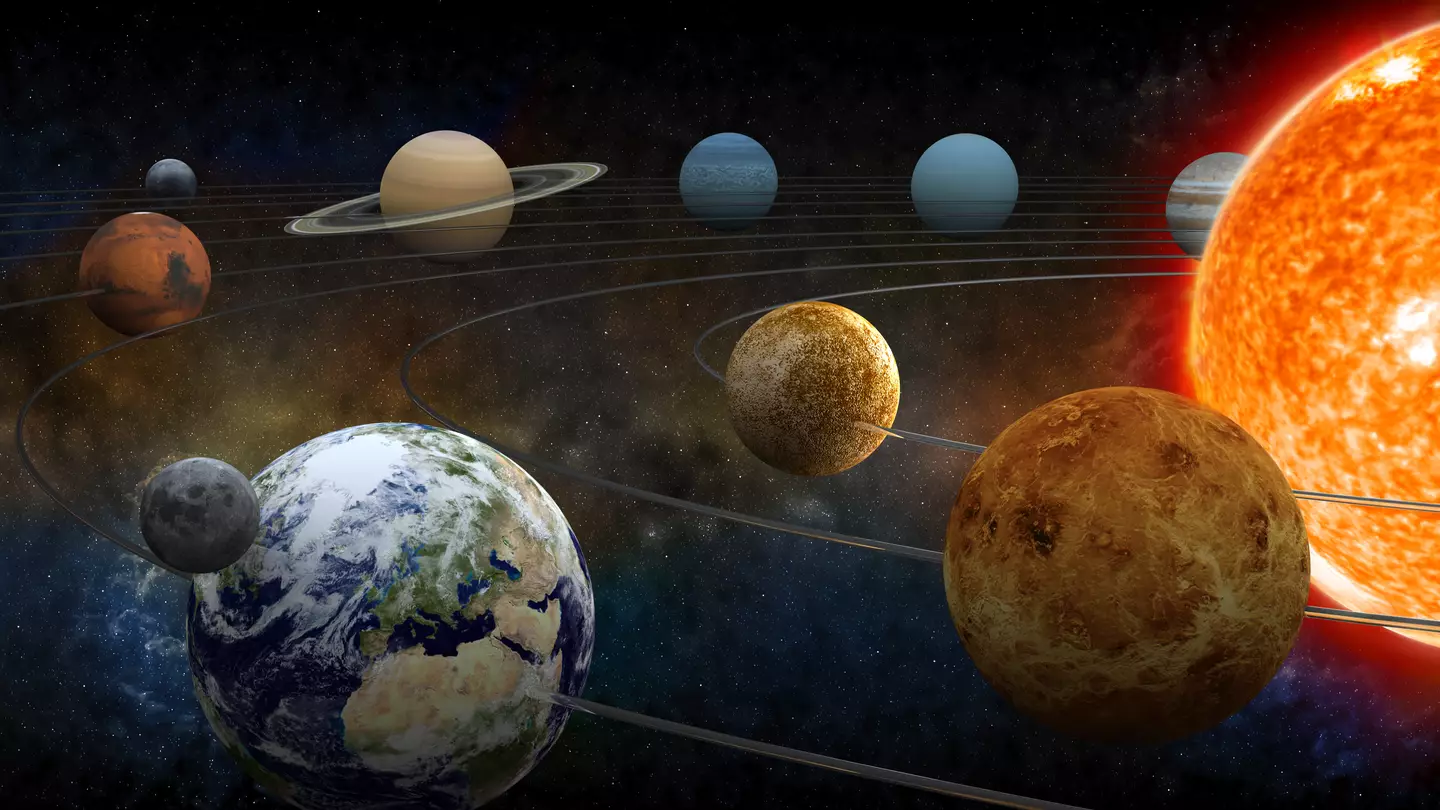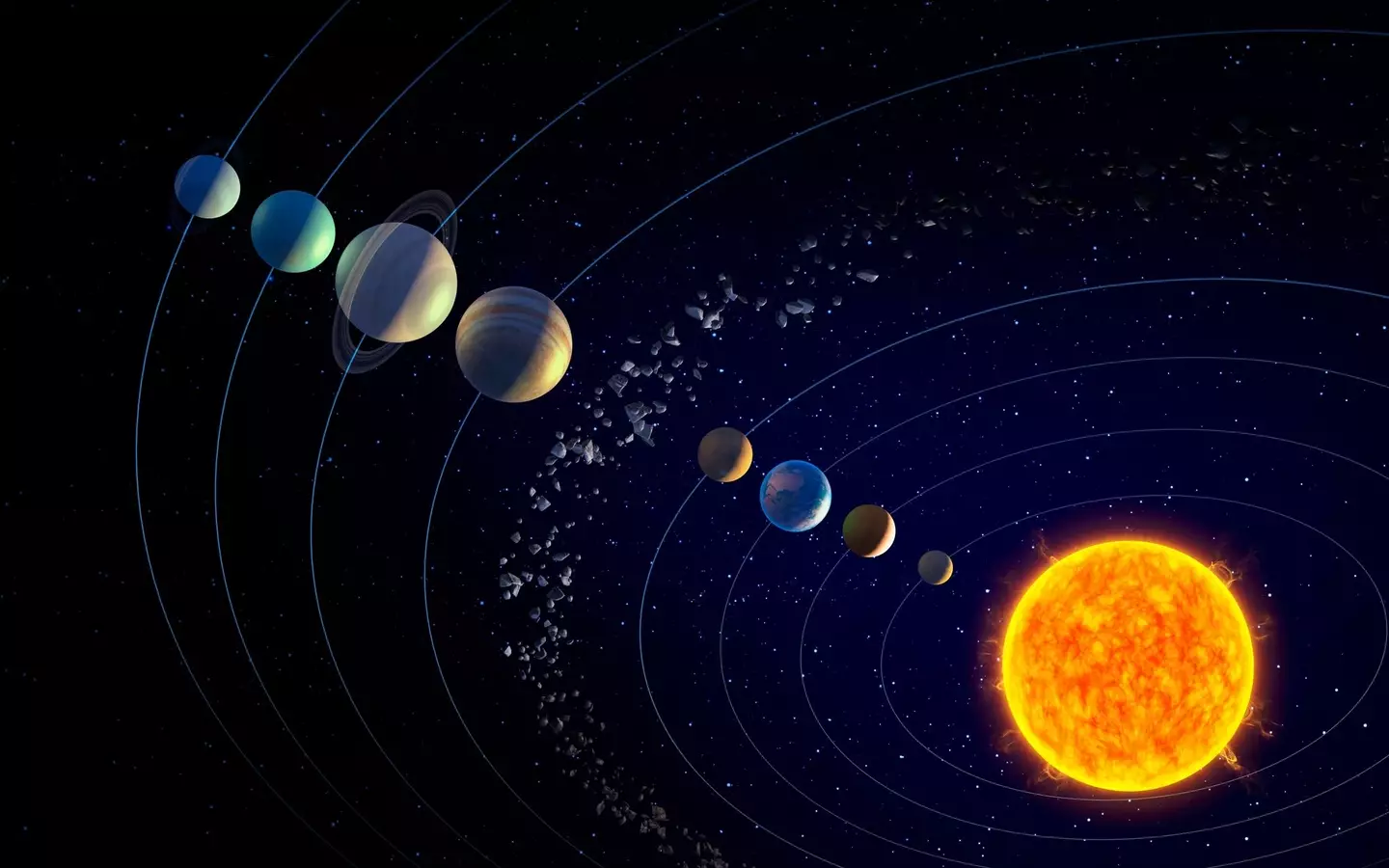
Get your telescopes at the ready, as this will be the last time you’ll be able to see seven planets in the night sky for another 15 years.
This week, you can get excited to see a celestial event like no other.
If you have no plans for tomorrow, might I interest you in finding a clear spot to set up your chair and blanket before feasting your eyes on Venus, Mars, Jupiter, Saturn, Uranus, Neptune and Mercury.
This seven-planet alignment marks a rare planetary alignment, which is only missing one of the major planets in our solar system (Pluto).
Advert

These alignments occur as they all orbit the Sun on the same level, albeit others at far different speeds than some.
Mercury takes 88 days to fully orbit as it is the closest to the Sun, but Neptune takes 165 years, as it’s the furthest of all the planets.
So, on the odd occasion that their orbits sync up, they end up forming a planetary parade, which allows you to see them in the sky.
Advert
Dr Shyam Balaji, researcher in astroparticle physics and cosmology at King’s College London, said: “On 28 February a seven-planet alignment will occur. Planetary alignments, where multiple planets appear close together in the sky, occur periodically but are relatively rare.”
They explained that ‘alignments of six or more planets happen approximately every few decades, depending on the specific orbital positions of the planets’.
Dr Balaji shared: “Planetary alignments occur because the planets in our solar system orbit the Sun within roughly the same plane, known as the ecliptic plane.
“As they orbit at different speeds and distances from the Sun, there are moments when they appear to line up from Earth's perspective. This alignment is a visual phenomenon rather than a physical one, as the planets remain separated by millions or even billions of kilometres in space.”
Advert

They explained that there is ‘no significant effect on Earth from planetary alignments regarding tides or weather’ and that even the ‘gravitational influence of the planets on Earth is negligible compared to that of the Moon and the Sun’.
So, if you thought that the alignments would cause a chain reaction of natural events, fear not.
The expert concluded: “While some speculative theories suggest minor influences on solar activity, these are not supported by robust scientific evidence.”
Advert
A theory about this includes Frank Stefani’s suggestion that the alignments of Venus, Earth, and Jupiter could play a role in the Sun’s 11-year solar cycle.
The physicist at Helmholtz-Zentrum research center in Germany shared in 2019 that He their combined gravitational pull could create internal rotations within the Sun, that could influence solar activity.
But the data has yet to prove him as being correct.
If you want to take a look at this rare event, travel to a clear area where the stars are visible and take out your binoculars.
Advert
You’ll immediately notice Saturn, Venus, and Jupiter as they are the brightest, and then Mars will be a small orange glowing ball.
For Uranus and Neptune, they may be harder to spot, but if the conditions are right, you should see the tiny dots in the sky just after sunset.
If you miss it, there’s always 2040 for your next chance.
If you’ve ever wanted to witness a planetary parade, this is your chance.
